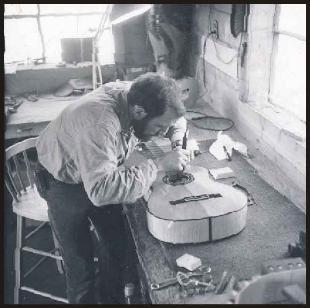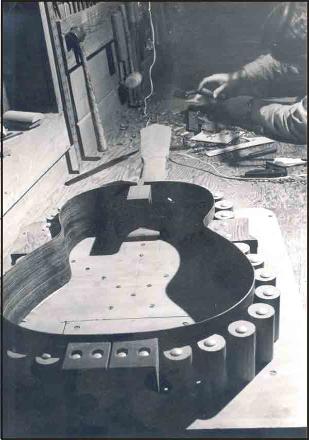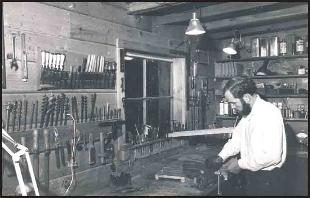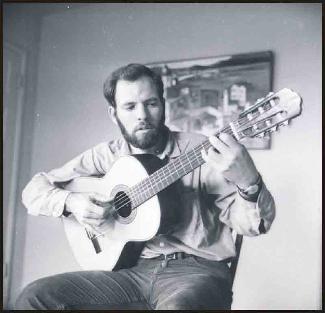A bit of biography
I grew up in Mission, Texas, a little town in the Rio Grand
Valley at the southern tip of the state. We were two miles
from the Mexican border, and I was exposed to Latino
culture from an early age. I developed a good Spanish
accent, which has since been a mixed pleasure and
embarrassment, as I don't speak Spanish very well.
The popular Latin music of the day was dance music like
tango, mambo, and cha-cha-cha, and the local Mexican
people listened to the latest Norteña (northern Mexican)
music which derives from French and German sources.
The single most inspiring experience of my Texas schooling
was playing clarinet in the Mission high school band when I
was in the 7th and 8th grades. We were a small town, so
much of the band was made up of junior high school kids.
Since the most important cultural thing happening in our
town in the fifties was football, the band got a lot of local
support, because the half-time shows we put on were
popular. I can attest that the seven academy award winning
movie "The Last Picture Show" is absolutely accurate in its
depiction of the time and place.
After football season, we worked on concert music. We
played opera overtures, and themes from symphonies, and
other short classical pieces adapted for players at our level.
Along came the overture to The Barber of Seville, and ,
though I didn't realize it at the time, the main passion of my
life was set. Real Spanish music! In the classic Spanish
mode (Phrygian, actually)! It passed the goose-bump test
with flying colors. I was hooked.
After 8th grade we moved 5 miles east to McAllen, where
the band wasn't nearly as good, and I had gotten
interested in ham radio. So for the next six years I listened
to a lot of music, mostly classical, and took a music
appreciation course my first year at Stanford. Whenever
something Spanish would come along, like De Falla's
"Nights in the Gardens of Spain", there would be those
goose bumps again. But I wasn't making music myself.
Fast forward to the San Francisco Bay Area in 1960. I
had given up on a career in electrical engineering, and was
at loose ends. I had started going up to "The City", as we
called SF, to a place in North Beach called "The Bread
and Wine Mission". It was a storefront outreach project to
the "beatniks" sponsored by the local Presbyterian church,
and there were poetry readings and folk music.
Valley at the southern tip of the state. We were two miles
from the Mexican border, and I was exposed to Latino
culture from an early age. I developed a good Spanish
accent, which has since been a mixed pleasure and
embarrassment, as I don't speak Spanish very well.
The popular Latin music of the day was dance music like
tango, mambo, and cha-cha-cha, and the local Mexican
people listened to the latest Norteña (northern Mexican)
music which derives from French and German sources.
The single most inspiring experience of my Texas schooling
was playing clarinet in the Mission high school band when I
was in the 7th and 8th grades. We were a small town, so
much of the band was made up of junior high school kids.
Since the most important cultural thing happening in our
town in the fifties was football, the band got a lot of local
support, because the half-time shows we put on were
popular. I can attest that the seven academy award winning
movie "The Last Picture Show" is absolutely accurate in its
depiction of the time and place.
After football season, we worked on concert music. We
played opera overtures, and themes from symphonies, and
other short classical pieces adapted for players at our level.
Along came the overture to The Barber of Seville, and ,
though I didn't realize it at the time, the main passion of my
life was set. Real Spanish music! In the classic Spanish
mode (Phrygian, actually)! It passed the goose-bump test
with flying colors. I was hooked.
After 8th grade we moved 5 miles east to McAllen, where
the band wasn't nearly as good, and I had gotten
interested in ham radio. So for the next six years I listened
to a lot of music, mostly classical, and took a music
appreciation course my first year at Stanford. Whenever
something Spanish would come along, like De Falla's
"Nights in the Gardens of Spain", there would be those
goose bumps again. But I wasn't making music myself.
Fast forward to the San Francisco Bay Area in 1960. I
had given up on a career in electrical engineering, and was
at loose ends. I had started going up to "The City", as we
called SF, to a place in North Beach called "The Bread
and Wine Mission". It was a storefront outreach project to
the "beatniks" sponsored by the local Presbyterian church,
and there were poetry readings and folk music.
Working on a German maple classic in my
shop in Claremont California 1964
shop in Claremont California 1964
In the foreground are the beginnings of an
East Indian rosewood classic, still owned
by Vince Meyer, a guitar maker in his own
right. Also, Claremont California 1964
East Indian rosewood classic, still owned
by Vince Meyer, a guitar maker in his own
right. Also, Claremont California 1964
Another photo of my Claremont shop in
1964 ~ same chisels, rasps, etc.
1964 ~ same chisels, rasps, etc.
I had considerably more hair, and less chub,
in those days.
in those days.
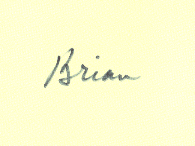
One Sunday night there, I heard a nylon string guitar for
the first time, and I realized that was the musical thing I
needed to fill the hole in my life where music making
used to be. It wasn't much of a jump to making the
connection between that sound, and the roots of Spanish
music, Flamenco.
So I got a cheap Mexican guitar, and began taking
Flamenco lessons from Freddy Mejia, and Dave Jones
(now David Serva) who both played professionally at
the Old Spaghetti Factory in North Beach. It was easy
to hear the difference between my guitar, and Freddy's
1931 Domingo Esteso, but a good guitar like that cost
$400, (!) which was well out of my price range.
I was admiring a friend's good guitar one day, and
lamenting the fact that I couldn't afford one, and he said
"Why don't you build your own?". John was an armchair
craftsman, and his wife, who worked in a bookstore,
had brought him a slim little volume called "How to Build
Your Own Spanish Guitar". He loaned me the book,
and it seemed like a fun project, and later, like a
satisfying way to make a living.
Stewart Brand, of Whole Earth Catalog fame, says that
you need to have the courage to fail young, so I guess I
was courageous. By 1965 it was clear that I had to do
other kinds of wood working for money. So in the
intervening years I have done a little of everything-- tool
production, kitchen cabinets, high end furniture, teaching
woodworking... In 1993 I decided to go back to my
first love, building guitars.
Two years ago I started teaching lutherie on an individual
basis, in addition to making guitars, and it has been
really enjoyable. It's much more relaxed than a class
situation, and I can devote all my attention to one person
at a time. This is my final career choice, along with little
side projects like booklets, videos, and tool
development. It's funny how things turn out.
Cheers,
the first time, and I realized that was the musical thing I
needed to fill the hole in my life where music making
used to be. It wasn't much of a jump to making the
connection between that sound, and the roots of Spanish
music, Flamenco.
So I got a cheap Mexican guitar, and began taking
Flamenco lessons from Freddy Mejia, and Dave Jones
(now David Serva) who both played professionally at
the Old Spaghetti Factory in North Beach. It was easy
to hear the difference between my guitar, and Freddy's
1931 Domingo Esteso, but a good guitar like that cost
$400, (!) which was well out of my price range.
I was admiring a friend's good guitar one day, and
lamenting the fact that I couldn't afford one, and he said
"Why don't you build your own?". John was an armchair
craftsman, and his wife, who worked in a bookstore,
had brought him a slim little volume called "How to Build
Your Own Spanish Guitar". He loaned me the book,
and it seemed like a fun project, and later, like a
satisfying way to make a living.
Stewart Brand, of Whole Earth Catalog fame, says that
you need to have the courage to fail young, so I guess I
was courageous. By 1965 it was clear that I had to do
other kinds of wood working for money. So in the
intervening years I have done a little of everything-- tool
production, kitchen cabinets, high end furniture, teaching
woodworking... In 1993 I decided to go back to my
first love, building guitars.
Two years ago I started teaching lutherie on an individual
basis, in addition to making guitars, and it has been
really enjoyable. It's much more relaxed than a class
situation, and I can devote all my attention to one person
at a time. This is my final career choice, along with little
side projects like booklets, videos, and tool
development. It's funny how things turn out.
Cheers,
____________________________________
Click on the photos to enlarge


